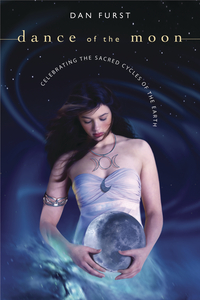Full Moon Names
Ask four Pagans the name of the full moon this month, and you’ll get five different answers. There are several traditions for naming moons; to give just one example, the full moon in December could be called the Oak Moon, the Cold Moon, the Snow Moon, the Winter Moon, or the Long Nights Moon. Poke around some more, and you’re sure to find other names and interpretations.
I bring this up because people can also call two different full moons the same thing once in a while. Some people go by zodiac sign when determining the full moon’s name – is the sun in Virgo or in Libra? Others calculate based on which festival the moon is actually closest to, in number of days – the Harvest Moon is whichever full moon is closest to the Fall Equinox, regardless of calendar month or sun sign.
Here at Llewellyn, our annuals department uses an interesting luni-solar solution to this problem of shifting full moon names. To simplify, they go by calendar month instead of zodiac or astronomical phenomena. That means that in Llewellyn datebooks and calendars, the Corn Moon, associated with Lammas, will always be the full moon of August; the Harvest Moon will always be in September with Mabon; and the Blood Moon with always take place in October, linked to Samhain.
This means that once in a while Llewellyn does not give the same name to a full moon as other sources. This year for example (and I believe next time in 2017 and 2020), the “Harvest Moon” on September 4 was actually not the closest full moon to the Autumn Equinox, since the Full Moon on October 4th will be just 12 days after the Equinox. Yet we still called it the Harvest Moon because Mabon is associated with the fruit and vegetable harvest in September, while our previous Corn Moon was associated with the grain harvest in August. So if you’re noticing any discrepancy between our datebooks and other sources, this is the reason why.
If you have a passion for comparing astrological and zodiacal information to the Pagan wheel of the year, for knowing the various names of full moons in different cultures and why they were named so, and how various lunar, solar and luni-solar calendars were developed (including the Islamic and Mayan calendars alongside the seasonal festivals of Celts, Egyptians, and many other cultures), then by all means, check out Dan Furst’s new book, Dance of the Moon. To get a taste for what it’s like, take advantage of our new browse inside feature, or check out Furst’s wonderful Universal Festival Calendar on his website.

Dance of the Moon by Dan Furst
What about you? How do you decide what you’ll call the full moon – is it based on your particular tradition or coven? Do you just follow Llewellyn’s calendars? Do you use another resource? What is the most important factor to you in determining what to call any given full moon?







